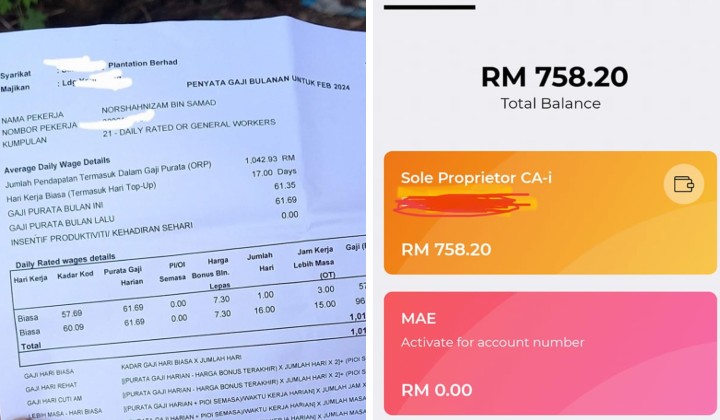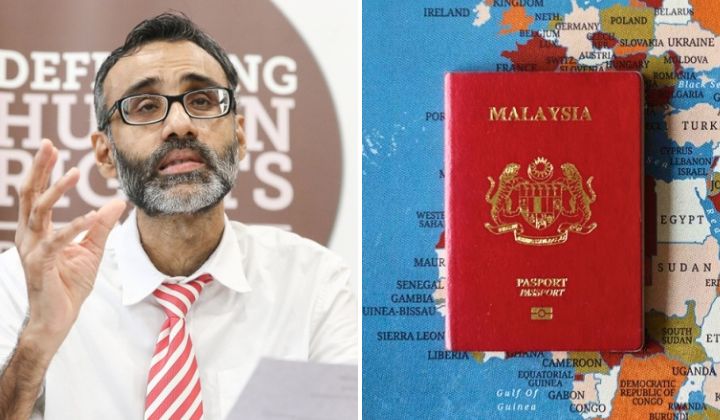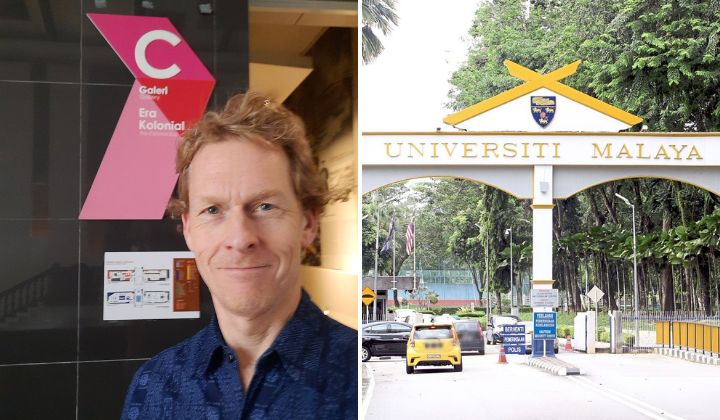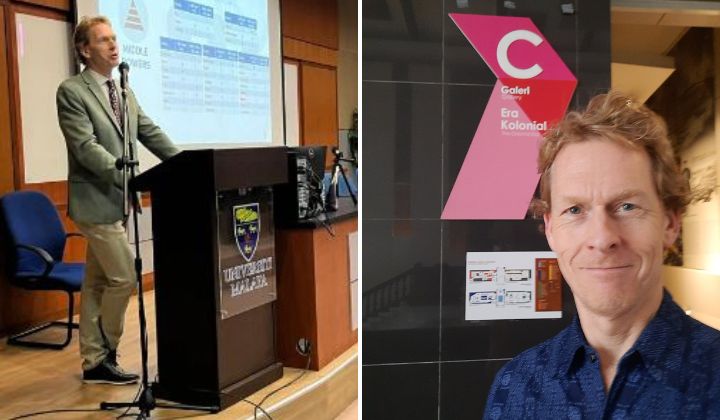RM1K Dilemma: Educating Children On A Shoestring Budget In Malaysia
Despite the government’s efforts to raise the minimum wage, many Malaysians like Norshahnizam still struggle to make ends meet. The rising cost of living and education expenses push families deeper into poverty.

Subscribe to our FREE Newsletter, or Telegram and WhatsApp channels for the latest stories and updates.
For Norshahnizam Samad, a father of three earning a modest RM1,000 per month, the dream of providing his children with a quality education is overshadowed by the harsh reality of Malaysia’s high schooling costs.
Norshahnizam’s monthly salary as an estate worker barely covers the family’s basic needs.
The RM870 in school fees alone strains it, leaving little room for other essential expenses.
He has sought help from various quarters, including the local mosque and community leaders, but to no avail.
With school supplies yet to be purchased and the fear of falling into debt looming large, he remains hopeful that a solution will emerge.
His story, shared on social media, has struck a chord with many Malaysians in similar situations.
Some even screenshot their meagre bank account balances in solidarity.
The Price of Education: A Heavy Burden on Malaysian Families
For a family with three school-going children, like Norshahnizam’s, the annual education expenses can easily surpass RM2,000, a substantial sum considering the household’s annual income of just RM12,000.
Much of the family’s income is allocated to schooling costs alone, leaving little for other crucial expenses such as housing, food, and healthcare.
Norshahnizam’s predicament is common among Malaysian families.
A study in 2022 reveals that the average Malaysian household spends 1.4% of its income on education.
Breaking down the costs, parents can expect to pay anywhere from RM50 to RM200 per student annually in school fees, which include charges such as the Parent-Teacher Association (PTA) fee, school development fund, and computer lab fee.
Additionally, uniforms, textbooks, and school supplies can cost an average of RM500 per child yearly.
The Struggle for Education Amidst Malaysia’s Affluence
For some Malaysians, the biggest concerns revolve around upgrading to the latest iPhone, planning the next holiday getaway, or deciding when to buy a new car.
However, HOPE worldwide Malaysia country director Darick Wong reveals a sobering truth: it’s not uncommon for poor families to have less than RM100 in their savings, a stark reminder of their daily struggles.
As most of us navigate the daily challenges of keeping up with the Joneses, he encounters countless stories of hardship and resilience through HOPE Worldwide Malaysia’s free clinic, food distribution centre, and tuition programs for children in the heart of Sentul, where poverty’s grip is tight.
Families are forced to make impossible choices between putting food on the table and investing in their children’s education. This financial strain can have long-lasting effects on a family’s well-being and prospects.
Amidst the glimmers of hope, Wong also sees the shadows cast by the cost of education.
Wong added that the disparity highlights the urgent need to embrace Environmental, Social, and Governance (ESG) values to create a more equitable and sustainable society.
By prioritizing social responsibility and inclusivity, Malaysia can work towards bridging the educational divide and ensuring that every child has the opportunity to unlock their full potential.

A Collaborative Effort to Make Education Accessible for All
To address this issue, the government must prioritize making education more affordable and accessible for all Malaysians.
This can be achieved through targeted financial assistance programs for low-income families, subsidies for school supplies and uniforms, and increased investment in quality public education to reduce the need for additional fees.
Moreover, schools and community organizations can play a role in easing the burden on families by organizing donation drives for school supplies, establishing uniform exchanges, and providing scholarships or fee waivers for students from disadvantaged backgrounds.
As Norshahnizam’s story illustrates, pursuing education should not come at the cost of a family’s financial stability and well-being.
By working together to create a more equitable and affordable education system, Malaysia can ensure that every child, regardless of their family’s income, has the opportunity to unlock their full potential and build a brighter future.
Share your thoughts with us via TRP’s Facebook, Twitter, Instagram, or Threads.





